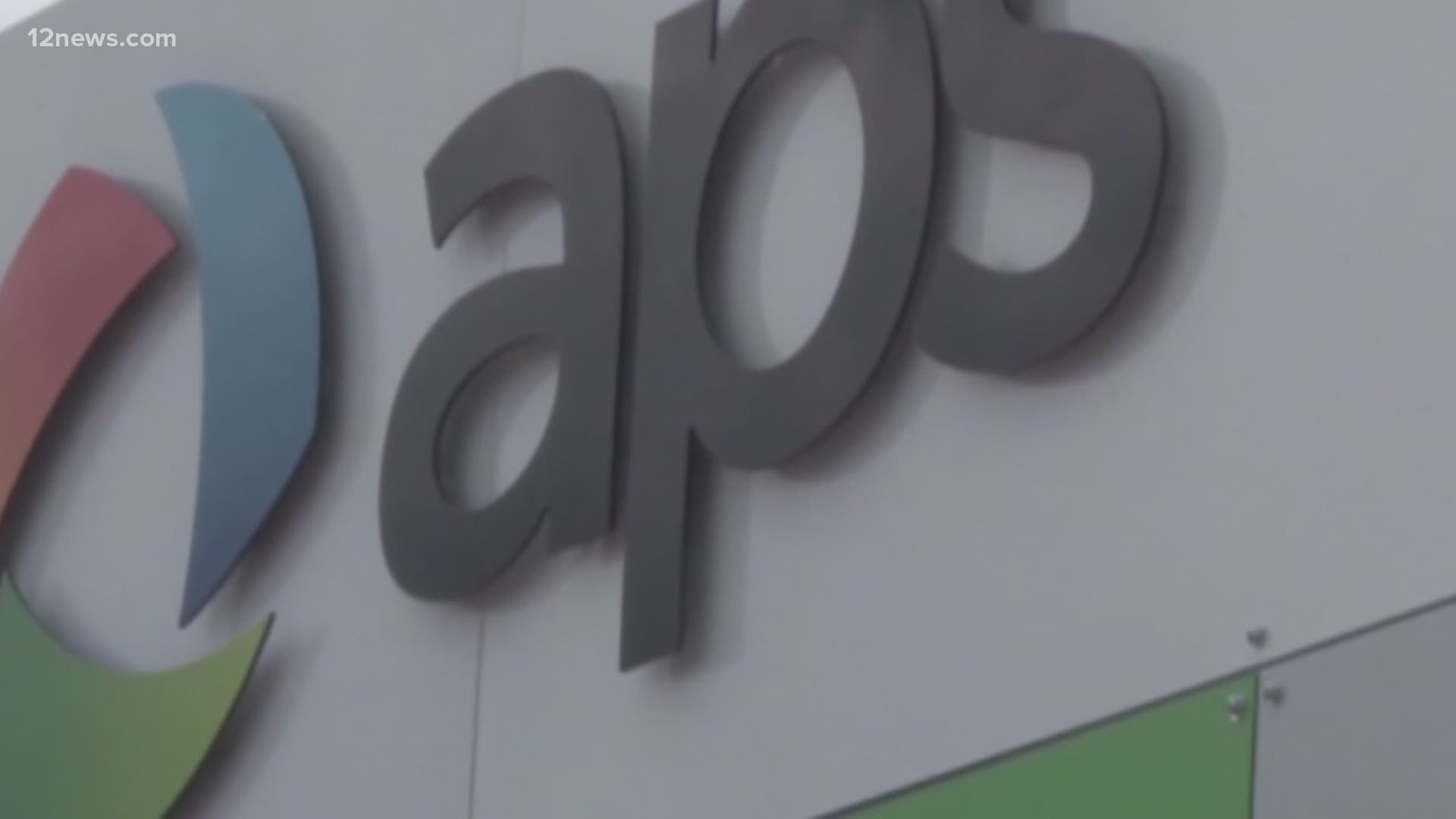PHOENIX — A new independent report harshly criticizes Arizona’s largest power company, APS, for not doing enough to help customers save on their bills.
The report also accuses APS of failing to implement mechanisms to determine if customers comprehended the menu of billing options that went into effect in August 2017 and remain in place today.
One Corporation Commissioner says the findings confirm APS’s customer outreach efforts over the past three years have been a “dismal failure.”
The Arizona Corporation Commission ordered the consultation in response to a grassroots consumer complaint filed against APS and a subsequent rate review last year. Maine-based energy consultant Barbara R. Alexander analyzed APS’s Customer Education and Outreach Plan.
Among Alexander’s findings:
- APS failed to establish any measurable performance metrics in order to determine the effectiveness of the plan
- APS communications designed to educate customers about their most economical plan “have not been successful.”
- APS failed to include essential components of “a reasonable customer education plan…” given “the monumental task that APS stated it could achieve.”
- APS did not conduct any research to determine customer comprehension or understanding of its customer communications and messaging about the new rate plan or the details of the plan options
- APS has not updated its Education Plan or undertaken steps to update its Customer Education goals since the end of the transition period covered by the 2017 plan
- All of APS’ communications to customers emphasized “save with your new plan” but there was no actual promise of saving due to the overall rate increase
- APS’s call center performance is below acceptable
- APS has not conducted customer satisfaction studies on residential time of use rates in the last five years
- As of February 2020, only 6% of APS customers were enrolled in the rate discount program which is “far below” the actual percentage of households living in poverty in APS’s service territory
- There may be a “barrier” to retaining low income customers in the rate discount program year over year
“APS did all the traditional things to educate customers but when you have such a complicated rate design, I don’t know how you make it work,” said Stephen Jennings, Associate State Director of AARP, a nonprofit advocating for aging Arizonans.
Jennings has been critical of the rate design and wants stricter accountability and oversite over the regulated monopoly by commissioners.
“When you have six different plans with all these fancy marketing names, how are people supposed to figure it out?” Jennings said.
Both APS CEO Jeff Guldner and Vice President of Communications Jessica Pacheco declined an interview request. In the past, APS spokespeople have said the company spent $5 million on a robust customer education and outreach effort during the transition to new service plans. That effort included email, direct mail, social media, advertising and customer consultation at public events.
According to the report, APS’s customer education plan did not conform to best practices. For example, the plan did not specifically identify the special needs of low income and fixed income customers.
It also did not establish any objectives or goals that actually measured whether customers were actually placed on the “best plan” for them.
On Wednesday an APS spokesperson issued a written statement that, “Our focus is on learning all we can from the findings and continuously improving in the area of customer communications. We are reviewing the report closely with a focus on the recommendations that benefit our customers.”
Consumer advocate Stacey Champion filed the initial complaint in 2017 that has triggered a series of hearings at the Corporation Commission, exposing rate design flaws and administrative errors by APS.
Champion says she views the latest report as more evidence that the APS rate design approved by the Corporation Commission and its staff is unjust.
“In my original complaint we brought many of these things to light over and over,” Champion said. “It infuriates me because I don’t know how much more proof these commissioners need to actually do something about it.”
Last year, the commission stopped short of rescinding the current rate design. Instead, commissioners voted to begin a new rate case a year earlier than planned. As part of that new rate case which will be voted on later this year, APS is asking for a $180 million rate hike.
That request follows several years of record earnings by APS’s parent company Pinnacle West, which solely exists on APS revenues. Federal statistics show last year APS charged captive ratepayers up to 30% more per kilowatt-hour compared to other Arizona utilities.
“Do I think this information (the report) is valuable information and can be taken into consideration as we move forward in this new rate case? Absolutely,” said Commissioner Justin Olson who was not on the commission when it approved the 2017 rate plan. “It provides information on what the utility failed to do in properly educating and informing the customers about what rates are available to them.”
Olson said the report helps explain why more than half of APS customers have not been on their most economical rate plan.
“This report showed what I anticipated which is that their customer education and outreach plan was a dismal failure,” Olson said.
When asked if he will oppose a rate hike for APS later this year, Olson said he cannot prejudice the case and will rule on it after all the evidence is brought forward.
Though the report contained mostly indictments against APS, it also contained three positive conclusions:
- At the direction of the Commission, APS has recently implemented a “pro forma” bill that is likely to help customers better understand how their current plan compares to other options
- APS is conducting more outreach and engagement with stakeholders
- APS is developing a redesigned residential customer bill that will be easier to understand

